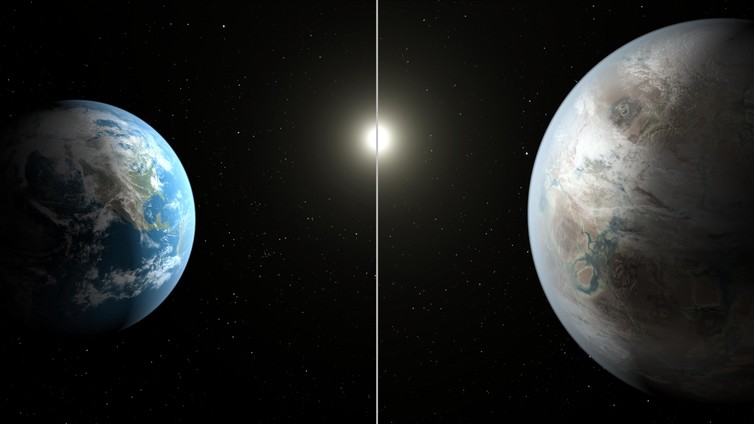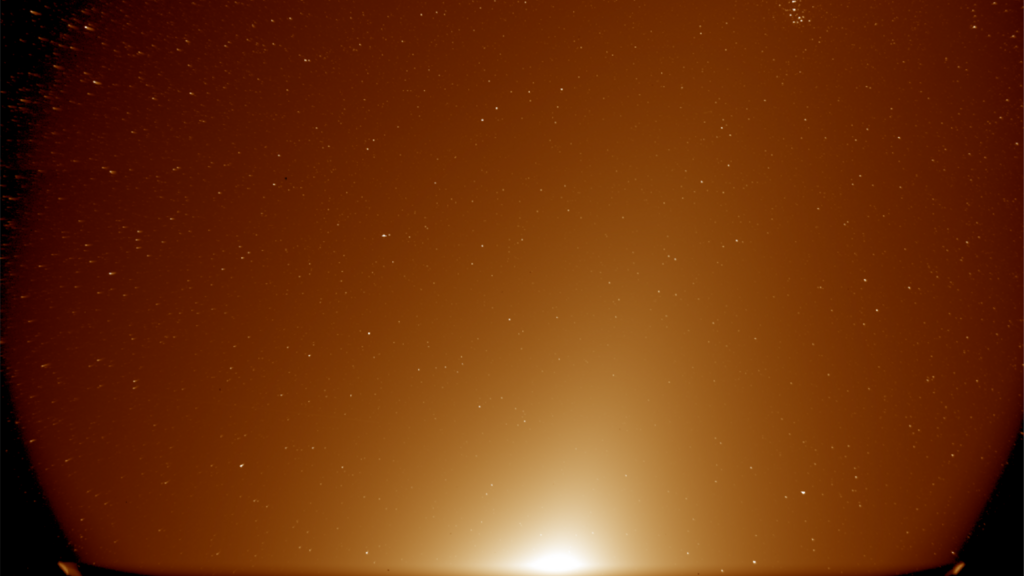
Curious Kids: What Plants Could Grow in the Goldilocks Zone of Space?

This is an article from Curious Kids, a new series aimed at children. The Conversation is asking kids to send in questions they'd like an expert to answer. All questions are welcome – serious, weird or wacky! This article was originally published at The Conversation. The publication contributed the article to Space.com's Expert Voices: Op-Ed & Insights.
What plants could grow in the Goldilocks zone of space? – Jesse, 9, Miranda.
Imagine a planet like the Earth, orbiting a distant star. Could that planet have life? Well, life on Earth (the only life we know) needs liquid water. So to find life on another planet, we think that that planet would have to be "just right." [The Strangest Alien Planets (Gallery)]
If the planet is too close to its star, it will be too hot, and any oceans would boil. Too distant, and any oceans would freeze. Somewhere in between lies the "Goldilocks Zone" - not too hot, not too cold, but just right.

We still haven't discovered life on any other planet, so we can't say for sure what such life would be like. One thing is certain, though - alien life will be very, very different to anything on Earth.
We can try to imagine plants that could live on other planets based on the facts we do have. Using your imagination like this is a very important part of being a scientist, trying to explore the vast ocean of the unknown.
So many planets
One thing we've learned over the last 20 years is that planets are everywhere. Almost every star has planets – so there are more planets in our galaxy than there are stars.
"Goldilocks planets" could be bigger or smaller than the Earth. Smaller ones have weaker gravity, so you would weigh far less there than on the Earth. Plants (and animals!) growing there could easily be much taller than on Earth, since it would be easier for them to grow up!
Get the Space.com Newsletter
Breaking space news, the latest updates on rocket launches, skywatching events and more!
On a bigger planet, more massive than Earth, plants would probably be much shorter – thanks to the stronger gravity on such a world. We can work out how strong gravity would be on different planets. This cool website lets you work out how much you would weigh on other objects in the Solar system, for example.

Water, wind and light
Also, not all planets are equally wet. Some are likely dry, desert worlds, while other "Earth-like" worlds might have oceans tens, or hundreds of kilometres deep. What kind of plants could grow on those desert or water worlds?
If a "Goldilocks planet" had a thin atmosphere (like Mars), even the strongest winds would push more gently than a soft breeze here on Earth. Any plants probably wouldn't need to be very strong to protect against bad weather. With a really thick atmosphere, though, winds push harder – and any plants in those conditions would have to evolve to be really tough.
And then we get to light. Plants on Earth have evolved to use the light from the Sun to get their energy, using a chemical called chlorophyll. It absorbs blue and red light, but reflects green light.

That chemical is really useful for Earth plants, because the Sun gives off lots of energy in the blue and the red. But imagine a dull, cool, red star. That star would be red because it doesn’t give off much yellow or blue light – and so plants using chlorophyll would starve!
But there are probably lots of other chemicals that plants on those worlds could use to live under their own suns. There may even be life on planets out there with more than one sun - with each star a different colour in the daylight sky!

Put all that together and you have lots of fuel for your imagination! Plants that are different colours to those on Earth, using different coloured starlight. Tall, wispy plants, living on worlds with low gravity and thin atmospheres. Squat, low, strong plants on worlds that are massive, or have thick atmospheres.
Plants on other planets are bound to be even weirder than the strangest ones we find on Earth – and probably stranger than we can even imagine!
Hello, curious kids! Have you got a question you’d like an expert to answer? Ask an adult to send your question to us. They can:
* Email your question to curiouskids@theconversation.edu.au
* Tell us on Twitter by tagging @ConversationEDU with the hashtag #curiouskids, or
* Tell us on Facebook

Please tell us your name, age, and which city you live in. You can send an audio recording of your question too, if you want. Send as many questions as you like! We won't be able to answer every question but we will do our best.
Jonti Horner, Vice Chancellor's Senior Research Fellow, University of Southern Queensland
This article was originally published on The Conversation. Read the original article. This article was originally published on The Conversation. Read the original article. Follow all of the Expert Voices issues and debates — and become part of the discussion — on Facebook, Twitter and Google +. The views expressed are those of the author and do not necessarily reflect the views of the publisher. This version of the article was originally published on Space.com.
Join our Space Forums to keep talking space on the latest missions, night sky and more! And if you have a news tip, correction or comment, let us know at: community@space.com.

Jonti is an astronomer and astrobiologist based at the University of Southern Queensland, in Toowoomba, Queensland.
They first became interested in astronomy as a five-year-old, as a result of viewing an accidentally recorded episode of the Sky at Night.
Jonti has always been particularly interested in the Solar system, especially the small objects therein - the comets, asteroids and meteors.
In recent years, they've been expanding their research to include astrobiology and the search for, and study of, exoplanets.









